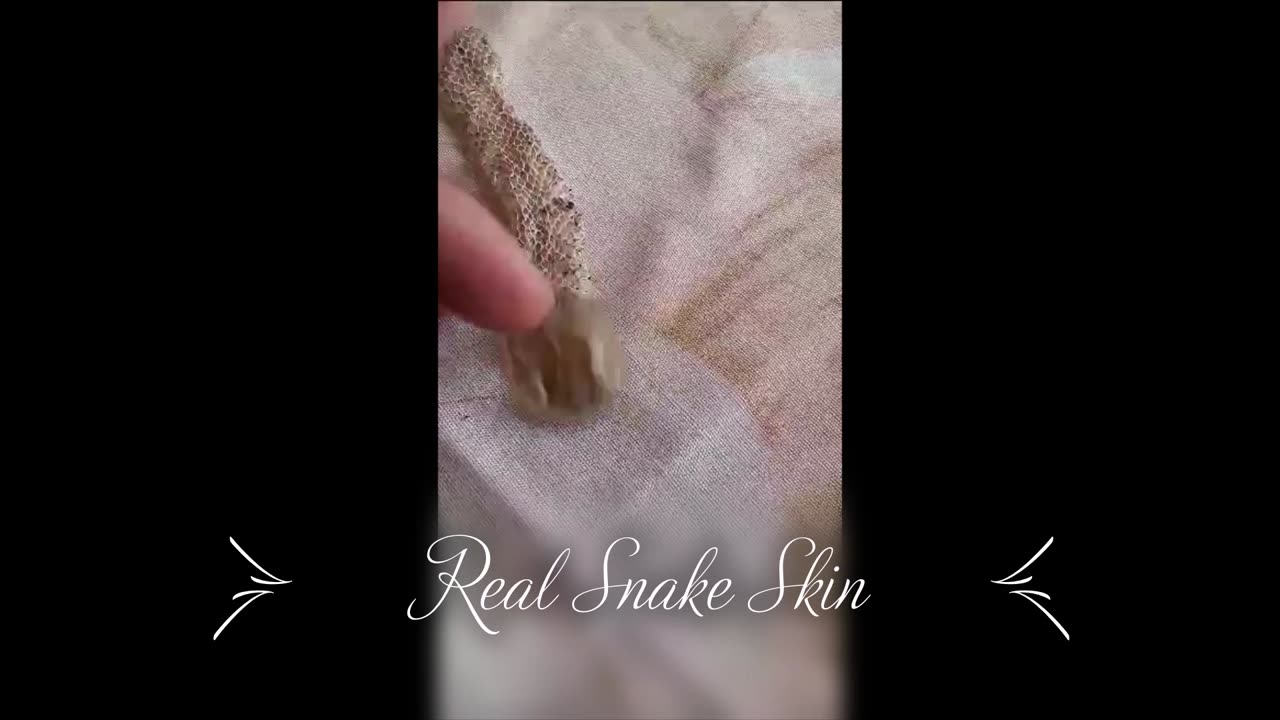Premium Only Content

Snake skin
Snake skin is the outer covering that protects a snake's body. It plays a crucial role in various aspects of a snake's life, including protection, camouflage, and thermoregulation. Here's some information about snake skin:
Composition: Snake skin is composed of scales, which are made of keratin, a protein found in human hair and nails. These scales overlap and provide a flexible yet protective barrier for the snake's body.
Shedding: Snakes are ectothermic, meaning they rely on external sources of heat to regulate their body temperature. As a snake grows, its skin does not grow along with it. To accommodate its growth, snakes periodically shed their old skin in a process called ecdysis or molting. This shedding helps remove parasites, old and damaged skin, and also provides a chance for the snake to renew its outer protective layer.
Frequency of Shedding: The frequency of shedding depends on the snake's age, species, growth rate, and environmental factors like temperature and food availability. Young snakes shed more frequently than adults since they grow rapidly.
Process of Shedding: Prior to shedding, a snake's skin becomes dull and its eyes may appear cloudy or opaque. This is because a fluid is secreted between the old and new skin layers, separating them. The snake will then rub against rough surfaces to help remove the old skin, starting at the head and working its way down the body. The old skin is usually turned inside out during this process.
Camouflage: Snake skin is often adapted to the snake's environment, providing camouflage that helps them hide from predators and stalk prey. The coloration and patterns on the skin can mimic their surroundings, making them less noticeable.
Texture and Patterns: Different snake species have unique scale patterns and textures. Some have smooth scales, while others have keeled scales that give them a rougher texture. The patterns on the scales can vary widely, from bold and contrasting patterns to more subtle and cryptic ones.
Use in Fashion and Accessories: Snake skin, due to its unique texture and patterns, has been used in the fashion industry for various products, including shoes, bags, belts, and clothing. However, the use of snake skin and other exotic animal skins has been controversial due to ethical and conservation concerns.
Conservation Concerns: Many snake species are threatened or endangered due to habitat loss, over-exploitation, and illegal trade. Harvesting snake skins for fashion accessories can contribute to these conservation issues, and many countries have regulations in place to protect snake populations.
Variety of Species: With over 3,000 species of snakes worldwide, there is a wide diversity of snake skin textures, colors, and patterns. From the vibrant patterns of coral snakes to the earthy tones of some pythons, each species has its own unique skin characteristics.
It's important to note that snake populations and conservation statuses vary greatly across species, and it's crucial to support ethical and sustainable practices when dealing with snake skin products.
-
 LIVE
LIVE
EricJohnPizzaArtist
1 hour agoAwesome Sauce PIZZA ART LIVE Ep. #46: Celebrating ONE YEAR on RUMBLE and Star Wars Day!
392 watching -
 LIVE
LIVE
SpartakusLIVE
3 hours agoDuos w/ Woes || Verdansk GRIND that NEVER stops
315 watching -
 LIVE
LIVE
Major League Fishing
6 days agoLIVE! - Bass Pro Tour: Stage 4 - Day 4
4,573 watching -
 44:22
44:22
Tactical Advisor
9 hours agoFinished My Dream AR15! | Vault Room LIve Stream 022
69.7K10 -
 51:38
51:38
Man in America
1 day agoSINISTER: Cartel Child Trafficking Network Exposed by Investigative Journalist w/ Hollie McKay
93.2K60 -
 55:29
55:29
BEK TV
2 hours agoLeadership and becoming the Man Your Family Deserves - Joe Rigney | FOC Show
2.5K -
 33:13
33:13
Beach Broadcast
1 day ago5/3/2025 - Trump Effect and Comms! Big week ahead!
84.3K97 -
 11:39
11:39
Tundra Tactical
1 day ago $13.76 earnedSurprise Releases For the Trailer Park & The Micro-Brewery.
89.6K11 -
 27:24
27:24
MYLUNCHBREAK CHANNEL PAGE
1 day agoPyramids of Giza Were Just Exposed
76.1K94 -
 19:51
19:51
Bearing
1 day agoMy VAMPIRE WIFE is in a SATANIC MURDER CULT (Allegedly)🧛♂️🔪🩸
103K47